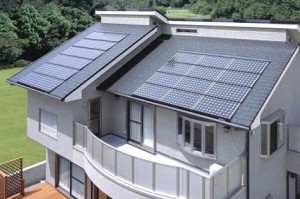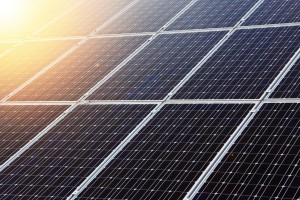Solar energy is one of the best ways in which electricity can be currently generated. There are specific components that allow this process to happen. First of all, solar panels have to be properly placed in a roof system.
Installing Solar Panels
Solar Panels and Roof Placement
First of all, the roof in which the panels will be placed should contain  no shades in order to maximize the energy gathered from the sun. Preferably, the whole installation should be facing the South (in the Northern hemisphere). It’s interesting to note that if a panel is shaded in a system containing around 40 panels, the whole electricity production will be cut by 50%. Thus, nothing should be blocking the sunlight from the panels in the roof. Solar panels should be placed at an angle of 43 degrees for optimal conversion.
no shades in order to maximize the energy gathered from the sun. Preferably, the whole installation should be facing the South (in the Northern hemisphere). It’s interesting to note that if a panel is shaded in a system containing around 40 panels, the whole electricity production will be cut by 50%. Thus, nothing should be blocking the sunlight from the panels in the roof. Solar panels should be placed at an angle of 43 degrees for optimal conversion.
Solar panels are modules made up of photo-voltaic cells that convert sunlight into electricity instead of heat. These cells are made up of silicon. These cells have two parts, a positive and a negative silicon film located under a thin frame of glass. The sunlight contains photons. When these photons reach the cells, electrons are kicked off from one silicon film to the other. This in turns creates an electric voltage that is collected, stored, and channeled. This is done by pairing several solar panels one next to the other creating an array. All of this system has a set of photo-voltaic cables transporting the electricity from the panels to an electrical box. In this stage of the process, the electricity is classified as DC or direct current.
Conversion from DC to AC
 This conversion is done by an inverter. The inverter is usually placed near the modules to make the process more straight forward. They shouldn’t be placed near the inside parts of the home since they can make annoying noises. An exterior wall near the roof is the most preferred location. The inverter itself is wired with both the electricity net meter and the electricity production meter. This way, the new energy being converted will be used by the electronic appliances currently in use in your home. Given that the you will be using energy from solar power, the electricity bill will be reduced to some extent.
This conversion is done by an inverter. The inverter is usually placed near the modules to make the process more straight forward. They shouldn’t be placed near the inside parts of the home since they can make annoying noises. An exterior wall near the roof is the most preferred location. The inverter itself is wired with both the electricity net meter and the electricity production meter. This way, the new energy being converted will be used by the electronic appliances currently in use in your home. Given that the you will be using energy from solar power, the electricity bill will be reduced to some extent.
Right now, most solar panels can convert up to 15% of the sunlight the receive into electricity. In theory, they can convert 30%, though. New technologies are being developed to move this number up to 60%.